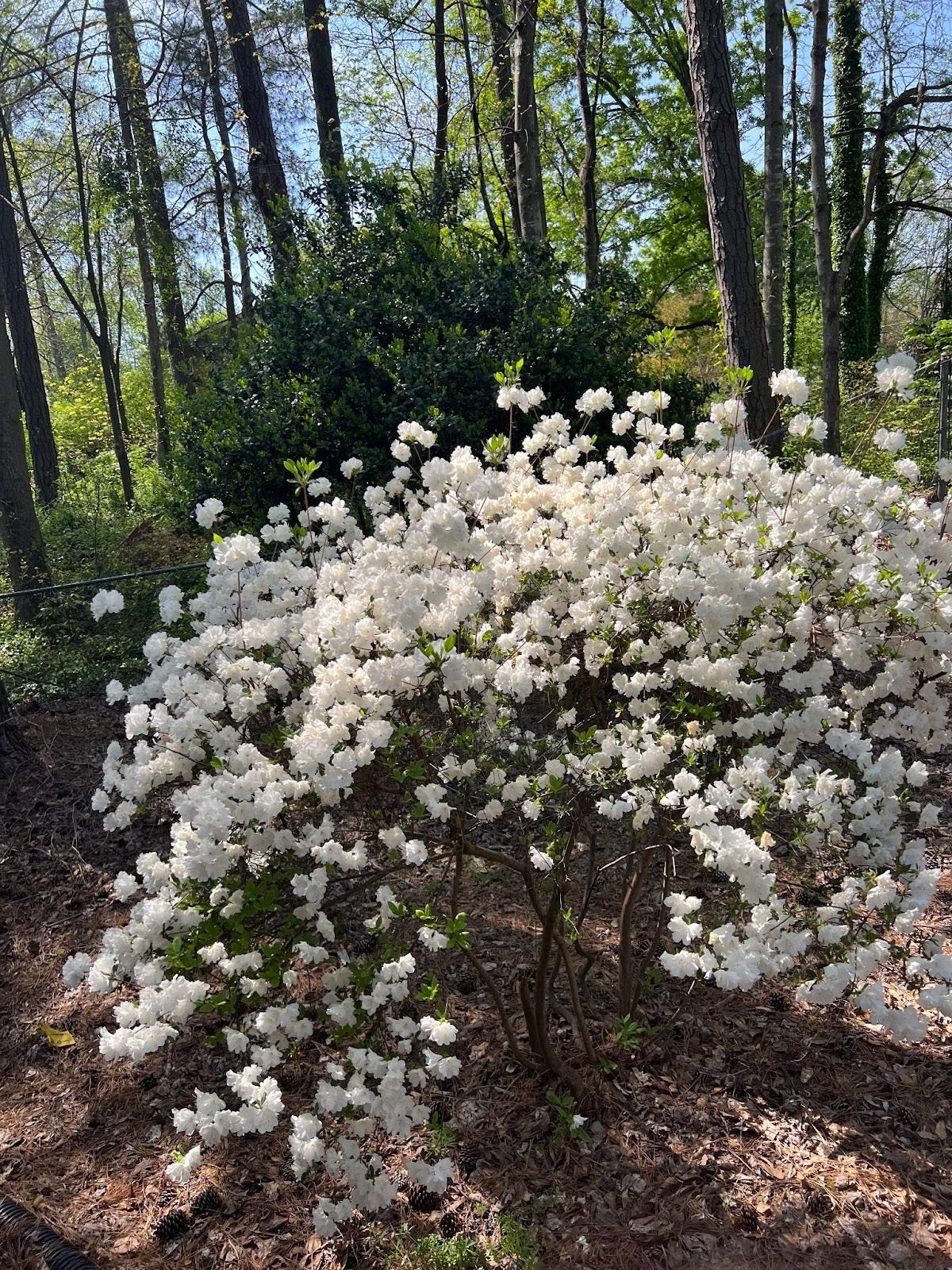Consider the lilies, how they grow: they neither toil nor spin, yet I tell you, even Solomon in all his glory was not arrayed like one of these. But if God so clothes the grass, which is alive in the field today, and tomorrow is thrown into the oven, how much more will he clothe you, O you of little faith! And do not seek what you are to eat and what you are to drink, nor be worried. For all the nations of the world seek after these things, and your Father knows that you need them. Instead, seek his kingdom, and these things will be added to you (Luke 12:27-31).
"The flowers appear on the earth,
the time of sneezing singing has come,
and the voice of the turtledove
is heard in our land"
(ESV. Song of Solomon 2:11).
In the Southeastern US where I live, March usually comes in with a freeze and goes out in a puff of yellow pine pollen. High pollen counts begin at 90 grains per cubic meter, but in late March and early April, those counts regularly reach well into the thousands. The highest reading was in March of 2012, at a whopping 9,369 grains of pollen per cubic meter of air! As I write this, the count is a mere 3,028 by comparison. While the yellow pine pollen is the most visible, creating a yellow haze in the air and a need to clean everything all the time, the grains are too large to be the source of many allergies. It's the oak, sweet gum, sycamore, and hackberry trees that make spring the season of sneezes.
I am of the opinion that allergies began in Genesis 3, with the curse of the ground (Genesis 3:17). God did not diminish the beauty of the earth he created, but he did remove the blessing of abundance without hardship for rebellious people. Because of sin, we work to eat, one way or another, and the work is wearying, frustrating, and sometimes miserable with allergies.
It's often easy to focus on the wearying, frustrating, and miserable when life's seasons turn. But, in the middle of hard, God still offers glimpses of beauty. Pollen only exists because things grow and bloom. The dead of winter gives way to life-affirming spring. In the South, daffodils bloom first, their sunny faces smiling hope on winter-weary people. Following pine pollen are azaleas and rhododendrons, bringing bright pink, purple, red, and white to the landscape just turning green. And then, dogwood trees burst forth with reminders of the cross etched into each petal. Each spring bloom declares the glory of God. Each flower dresses more magnificently than Solomon in all his glory for a short time (Luke 12:23-31). The brilliant colors of spring (even the yellow pollen) can remind us of God's care for us. What use are daffodils and azaleas? They are not food, they cannot provide clothing nor protection. They are merely glimmers of a future beauty that the Father has in store for those who love and trust him.
Yes, we work. Yes, life is often inexplicably hard, but God has promised that joy comes in the morning, and mourning turns to joy (Psalm 30). The burdens of this life and the things that worry us are real. But when we look at the birds of the air and the flowers of spring, we can remember that the Lord provides for all our needs, he loves us, and he sees us, even when we sneeze.
love this song:
Mourning to dancing ( Manditora ) by The Unveiled
Resources:
The ESV Bible. English Standard Version, Crossway, 2001.
Farmers' Almanac. "What Is That Yellow Dust?" Farmers' Almanac, https://www.farmersalmanac.com/yellow-dust-pollen.
Vaughn, Campbell. "There Is Point to All This Pollen." The Augusta Chronicle, 9 Mar. 2018, https://www.augustachronicle.com/story/lifestyle/2018/03/09/campbell-vaughn-there-is-point-to-all-this-pollen/13335994007/.









I tend to think work was always going to be part of being human, but sin initiated its becoming onerous. And, in some cases, pollinated. Praying for you during this season!
And this too will pass.